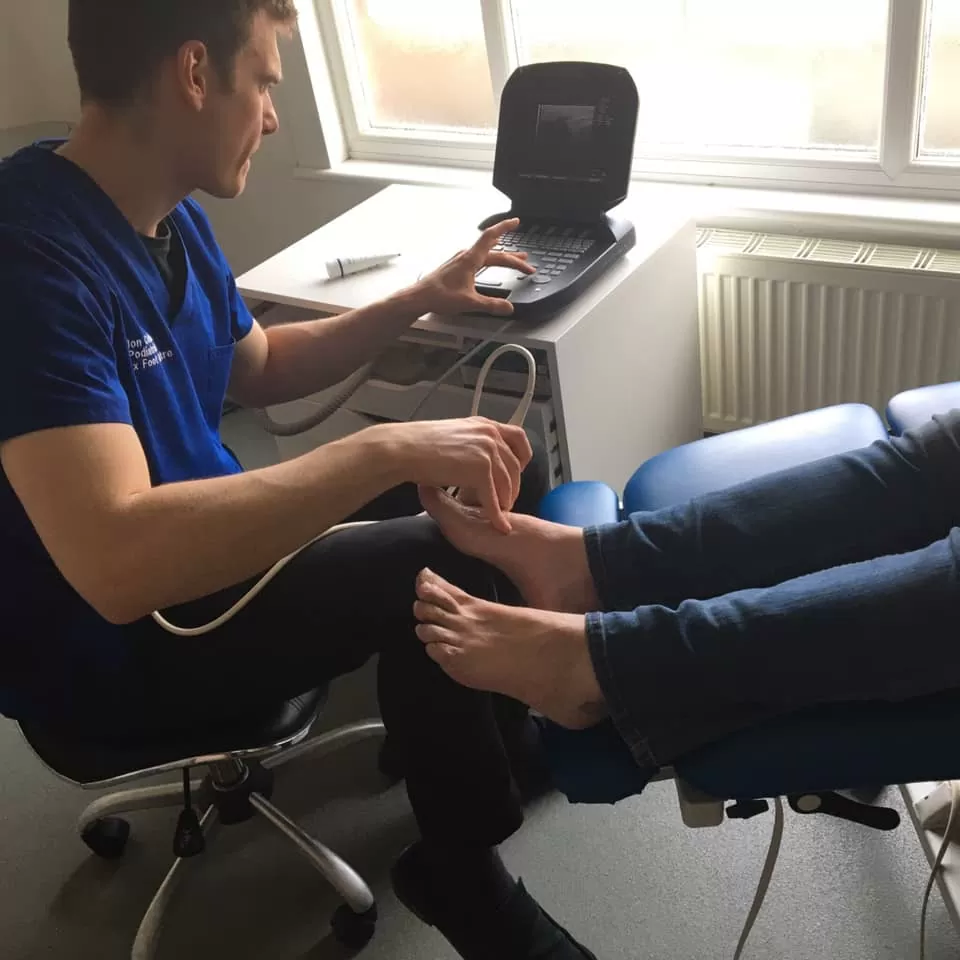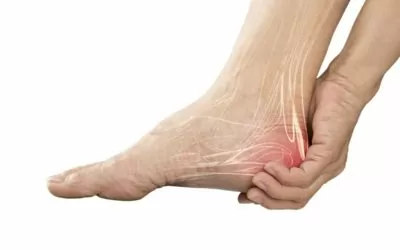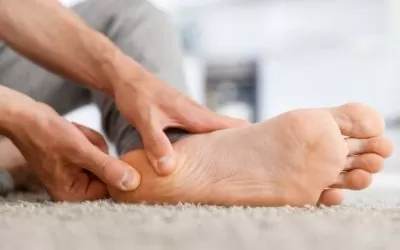Diagnosing Morton’s Neuroma
Morton’s neuroma is a painful condition that commonly affects the area between your third and fourth toe. It is often said to feel like you are standing on a small pebble in your shoe, or as if there is an extra-thick fold in your sock. The reason behind this sensation comes through the thickening of tissue around one of the nerves leading to your toes, which causes a sharp pain in the ball of your foot. This, in turn, leads to a feeling of numbness in your toes.
Book Your Initial Consultation withUltrasound Appointment for £60.00
What are the causes of Morton’s neuroma?
Morton’s neuroma can be caused by a number of things. However, the most commonly associated risk factors include:
- Incorrect footwear. Shoes that are too tight or have high heels cause the nerves in your feet to become compressed and irritated. This irritation then causes the associated nerve to thicken, making the sensation gradually more and more painful as time goes on.
- Repetitive sports. Running and racquet sports place an increased level of pressure on the ball of the foot which can lead to the development of Morton’s neuroma.
- Other sports. Certain activities, such as ballet or skiing, require tight shoes which can add an extra pressure onto the balls of your feet.
- Pre-existing foot issues. Flat feet, high arches, bunions and hammer toes can all contribute to the onset of Morton’s neuroma.
What are the common symptoms of Morton’s neuroma?
The most common symptom of Morton’s neuroma is the feeling that you have a small pebble stuck in your shoe. It is also characterised by a burning pain in the ball of the foot which radiates down towards the toes. This, in turn, creates a feeling of numbness.
There are typically no external signs associated with Morton’s neuroma, such as a lump you can press and feel, but it will often feel as if it there should be one there. The pain will instead be felt internally, requiring a Morton’s neuroma ultrasound or X-ray to identify accurately.
How is Morton’s neuroma diagnosed?
Morton’s neuroma can be diagnosed via a number of methods. In most cases, your podiatrist will initially press on your foot to feel for a tender spot. They will then use a specific imaging method to diagnose the extent of the issue. Some of the imaging methods used might include:
- X-ray. Taking an X-ray of your foot enables your podiatrist to rule out other causes of foot pain, such as a breakage or stress fracture.
- Diagnostic foot ultrasound. The most accurate method to identify Morton’s neuroma. Ultrasounds provide podiatrists with accurate images of your foot’s interior muscles and tendons. The painless procedure also allows your podiatrist to manipulate your foot in such a way to recreate the sensation of a neuroma, making it easier to diagnose any potential issues at hand.

What is the process for an ultrasound?
While it may sound scary to need an ‘ultrasound’, it really isn’t anything to worry about. The procedure is entirely painless and only takes approximately 20 minutes to complete.
The idea behind the technique is to produce accurate images of the muscles, tendons, ligaments and joints within your lower limbs. By being able to visualise these internal components, it makes it a lot easier for your podiatrist to identify any potential issues.
Here is the process you can expect to receive when undergoing a foot ultrasound:
- Your podiatrist will apply a small quantity of jelly-like gel to your ankle/calf area. This is designed to stop air pockets from interfering with the sound waves used to develop the images.
- He will then move a handheld device across the affected area. This uses sound waves to capture images of the inner workings of your foot. These images will be shown on an ultrasound monitor in real time, allowing you to see exactly what your podiatrist sees as he moves the handheld device across the affected area of your foot.
- Your podiatrist will then use these images to quickly identify whether there is an issue at hand. If there is, he will then determine what the best course of treatment is for you.
- Once he has assessed the issue, your podiatrist will talk through with you about what he has found, and discuss what the next steps are likely to be.
- Your podiatrist will then, if required, start you on an appropriate treatment plan to help resolve the issue.
How can you treat Morton’s neuroma?
Treating Morton’s neuroma depends on the severity of the issue at hand. In general, your podiatrist will recommend using a specially-designed orthotic, fitted to the exact contours of your feet and manufactured here on site. These externally applied devices function by altering the load of the ball of the foot to ease the pain you feel.
However, if this approach doesn’t help the issue, your podiatrist may then recommend a slightly more invasive treatment option. This might include:
- Injecting steroids directly into the affected area should help reduce the size of the neuroma and, accordingly, the severity of pain.
- Nerve removal. If all other treatment options fail to work, surgically removing the nerve may be the only appropriate course of action. This does, however, carry with it the minor risk of a permanent numbness being felt in the affected toes.
Here at Sussex Foot Centre, our specialist team of highly trained podiatrists can easily diagnose an array of lower limb-related issues. If you are suffering from pain in the base of your foot, contact our team and book in an appointment with us today.
Achilles Tendon Pain
The Achilles Tendon which Is also named the Calcaneal Tendon is avery durable, strong band of tissue. It connects the calf muscles tothe heel bone, and it is the strongest tendon in the human body, capable of holding up to 3 times its body...
Plantar Fasciitis: What is it?
Plantar Fasciitis is a common condition treated at The Sussex Foot Centre. ThePlantar Fascia is a large band of tissue which is situated along the bottom ofthe foot. Medical research states that Plantar Fasciitis affects up to 10% of thepopulation. It is therefore...
Calling All Runners
Calling all runners, we want to hear from you! If you are experiencing any aches and pains during or after your run, we would love to talk to you and discuss exactly how we can help. For a limited period of time, we will be...
BOOK AN APPOINTMENT
Follow the form below to get through directly to one of our Podiatrists at the practice or to request an appointment.
Or call — 01444 453874
"*" indicates required fields



